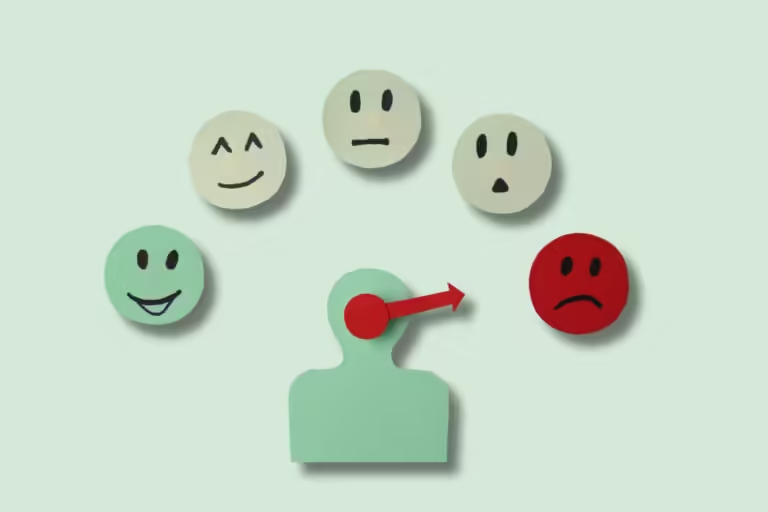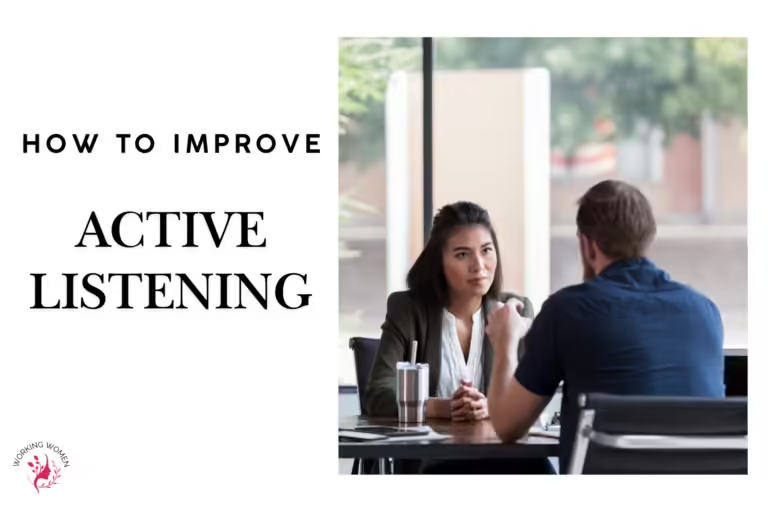Assertive Communication: Your Key to Success
Do you ever find yourself saying “yes” when you mean “no”? Do you struggle to express your needs, leaving you feeling frustrated and resentful? Perhaps you avoid difficult conversations, allowing conflicts to simmer beneath the surface. If these scenarios sound familiar, you’re not alone. Many people lack assertive communication skills, leading to personal dissatisfaction, strained relationships, and missed opportunities.
This article will change that. We’ll delve into the world of assertiveness, what it means, why it matters, and how to cultivate this powerful skill. This will show you to find your voice, set healthy boundaries, and navigate difficult conversations with confidence
Get ready to say goodbye to feeling unheard and embrace a life where your thoughts, feelings, and needs hold weight.
what is an assertive communication?
Assertive communication means finding your voice and standing up for yourself with respect. It means clearly expressing your needs and feelings without hesitation. You learn to set healthy boundaries and say “no” without guilt. At its core, assertive communication values both your own needs and the perspectives of others, making it a powerful tool for building strong, respectful relationships. While it may take practice, assertive communication leads to healthier relationships where everyone feels heard and respected.
Assertive Communication (Wrap-up)
Assertive communication is all about expressing your needs, opinions, and boundaries clearly yet respectfully. By being assertive, you communicate confidently while acknowledging the perspectives of others. You can become more assertive by focusing on honest self-expression, minimizing judgment, and prioritizing your feelings in communication.
why is assertive communication an effective strategy?
In a world where communication is key, assertive communication stands as a powerful tool for getting your needs met and fostering healthy relationships. Its emphasis on clarity, respect, and self-advocacy makes it an invaluable strategy for navigating personal and professional interactions. If you master this communication skill. You can solve below problems:
Feeling Unheard or Invisible: Assertiveness gives you the tools to ensure your opinions and needs are valued by others.
Passive-Aggressive Tendencies: This skill replaces indirect or hostile communication with direct, respectful expression.
Frequent Misunderstandings: Helps you communicate clearly and minimize room for misinterpretation in your interactions at work and in your personal life.
Difficulty Setting Boundaries: Teaches you how to say “no” without guilt, protect your time and energy, and create healthier relationships.
Lack of Self-Advocacy: Helps you stand up for yourself in all aspects of life, from negotiating a salary to defending your beliefs.
Benefits of assertive communication
Assertive communication helps you express yourself clearly and confidently, boosting your self-confidence, making your voice matter, and strengthening your sense of self-worth. It fosters deeper, more authentic relationships rooted in respect and understanding. which strengthen your bond with your family, friends, partner and colleagues.
Assertiveness allows you to address disagreements with respect, finding solutions that work for everyone involved. It reduces resentment and misunderstandings. By setting boundaries and expressing your needs, you reduce feelings of being overwhelmed or taken advantage of, leading to greater peace of mind.
You’ll make decisions that align with your values, free from the pressure to always please others. In the professional sphere, assertive communication positions you as a confident leader, opening doors to career advancement and greater recognition.
A study published in Technical University of Iaşi, Romania, revealed that individuals who use assertive communication methods developed high self esteem and confidence.
example of assertive communication
Here are some examples for your understanding of how this conversation looks like:
When Managing Workload: “I’m happy to help, but my current workload makes, taking on this additional project difficult. Could we explore alternative solutions?”
Addressing a team issue: “I’ve noticed that our meetings often run over time. I suggest we create an agenda to stay more focused and respect everyone’s time.”
Asking for a raise: “I’ve consistently exceeded expectations in my role, and I’d like to discuss a salary increase that reflects my contributions.”
Setting boundaries with a friend: “I value our friendship, but I need some downtime tonight. Can we reschedule our plans for tomorrow?”
Addressing disrespectful behavior: “I don’t appreciate your tone. Please speak to me with respect.”
passive aggressive and assertive communication
Passive Communication
Passive communication means avoiding expressing your true thoughts, feelings, and needs. You might be afraid of conflict, confrontation, or simply not know how to speak up for yourself. With passive communication, you often let others make decisions for you or ignore your own needs to keep the peace. This can lead to feeling frustrated, resentful, and like you don’t have a voice.
Aggressive Communication
Aggressive communication is the opposite of passive communication. It’s about getting your point across at any cost, often by putting others down or making them feel threatened. Imagine someone interrupting constantly, using insults, or shouting to get their way. That’s aggressive communication. While it might seem effective in the short term, it can damage relationships and make people avoid you in the long run.
Assertive Communication
Assertive communication is about finding the sweet spot between being passive and aggressive. It means expressing your needs, feelings, and opinions clearly and respectfully while also listening to and considering the viewpoint of others. Think of it as standing up for yourself without stepping on others’ toes. It’s about finding solutions that work for everyone involved.
Passive vs Aggressive vs Assertive communication
Here is an example of all these three types of communication
Example Scenario: A coworker repeatedly takes credit for your work contributions.
Communication Style
Passive
Aggresive
Assertive
Example
“It’s fine, I guess they didn’t notice my work.” (Internally feeling frustrated)
“You’re always stealing my ideas! Stop taking credit for my work!”
“I’ve noticed a pattern of my contributions being overlooked. Can we talk about how to ensure my work is properly acknowledged?”
Tips to Improve assertive communication
Improving assertiveness takes practice, but it’s incredibly rewarding! While improving assertive communication always remember that assertiveness is a skill, like many other skills it takes time and consistent practice to master.
Don’t be afraid of mistakes, everyone slips up sometimes; learn from them and keep going. Be kind to yourself, improving communication is a journey of self-growth. Here’s a breakdown of key strategies to help you get started:
Understanding yourself
Knowing where you stand is a key to change. Identify your communication style, are you naturally more passive, assertive, or aggressive? Understanding your tendencies helps you pinpoint areas for growth.
Recognize your triggers, Which situations cause you to slip into less assertive patterns? Awareness helps you prepare responses.
Non verbal Communication
Your Body language must align with your assertive communication style. Here are a few tips.
- Maintain steady but not aggressive eye contact. This shows confidence and that you are present in the conversation. Avoid staring by blinking naturally and occasionally looking away briefly.
- Stand tall with shoulders back and head held high. This projects a sense of self-assurance.
- Use open arm and open hand gestures to emphasize your points but use it moderately to avoid appearing frantic or aggressive.
- Show calm and attentive, gently pleasant facial expressions. Ensure your expressions align with your message and avoid mixed signals
- Avoid fidgeting or nervous movements as it shows lack of confidence
stick to facts, Avoid Exaggeration
Fact vs. Feeling: Describe the specific action, not the person’s character. Stick to factual descriptions of what they’ve done instead of negative labels of your own judgments or over-exaggeration.
Impact, not Intent: Explain how it affects you without assuming their motivations.
Example:
Situation: In a collaborative project, a team member frequently misses deadlines without prior notice.
Inappropriate (aggressive) response: “You’re so irresponsible! You never meet deadlines and sabotage our project by missing deadlines.”
Assertive communication: “I’ve noticed that there have been instances where deadlines for certain tasks weren’t met as planned, which has impacted our project timeline. When deadlines are missed, it puts pressure on the rest of the team to compensate and can lead to delays in our overall progress.”
Use "I" Statements instead of "You"
Using “I” statements helps you shift the focus to your feelings rather than blaming or attacking others. This highlights the impact of their behavior on you. By expressing your feelings and needs clearly, you open the door to finding solutions that work for both of you.”
Here is a basic structure of an “I” message:
- “I feel…”: Start by clearly stating your emotion (e.g., frustrated, concerned, happy, disappointed).
- When you…”: Describe the specific behavior or situation that triggered your feeling, without judgment or blame. Stick to the facts.
- Because…”: Explain how the behavior impacts you. This could be a practical consequence or an emotional effect.
- [Optional] I would like…”: If appropriate, clearly state what you need or would prefer to happen.
Example
Instead of: “You’re always interrupting me! It’s so rude!”
Try: “I feel frustrated when you interrupt me because it makes me feel like my thoughts don’t matter. I would like you to let me finish speaking before sharing your ideas.”
Another example:
Scenario: Your roommate consistently leaves their dirty dishes in the sink, expecting you to wash them.
Old Approach (Potentially Aggressive):
- “You’re so inconsiderate! Why do you always leave your dishes for me to clean?”
Assertive Approach with “I” Statements:
- “I feel frustrated when I come home to find dirty dishes in the sink because it feels like my time isn’t respected.”
- “I would like it if we could come up with a system where we both take responsibility for cleaning up after ourselves.”
Conclusion
Assertive communication isn’t merely a skill; it’s a transformative tool. By speaking up for yourself with respect and clarity, you unlock immense potential. No longer will you be held back by unspoken frustrations or walk away from conversations feeling misunderstood. Instead, assertive communication paves the way to stronger relationships, fulfilling personal interactions, and the confidence to make your voice matter in the workplace and the wider world.
Imagine a life where you advocate for yourself, find solutions that work for everyone, and navigate challenges with composure. This is the power of assertiveness and it’s within your reach.
Remember, this journey takes practice. Be kind to yourself as you learn and grow. Every time you express yourself assertively, you invest in a future where your needs, opinions, and boundaries are honored. The journey begins with a single “I” statements. Are you ready to begin?
FAQs
Control: Maintaining self-control in difficult situations and expressing your thoughts and feelings calmly and with composure. This includes controlling your emotions and body language.
Clarity: Communicating your needs, opinions, and boundaries clearly and directly without ambiguity or hesitation. Avoid vague language and use “I” statements to take ownership of your feelings.
Confidence: Believing in your right to express yourself and projecting a sense of self-assurance through your words, tone of voice, and body language.
Related:Power of Nonverbal communication
- Use “I” Statements: Focus on how you feel and the impact of others’ actions rather than blaming (“I feel frustrated when…” instead of “You always make me…”).
- Respect Others: Acknowledge their perspective and feelings. Assertiveness means advocating for yourself while respecting the rights of others.
- Be Clear and Direct: Avoid beating around the bush. Express your concerns and needs using specific language.
- Requesting Resources/Support: “To deliver this project on time, I’ll need additional resources [specify]. Can we discuss options?”
- Addressing Conflict: “I understand your perspective. Could we focus on finding a solution that works for both of us?”
- Feedback: “I appreciate your feedback. Could we clarify your expectations for [specific task] so I can better align my work?”
- Negotiation: “Based on my contributions, I’m seeking a salary increase of [amount]. I’m open to discussing this.”
- Managing Upward: “I’m concerned about the tight deadline. Could we brainstorm to either adjust the timeline or reprioritize tasks?”
Early life experiences, such as growing up in a critical environment or a culture that discourages self-expression, can create a pattern of passivity. Fear of rejection or conflict might hold you back from speaking up. Additionally, if you have low self-esteem or negative self-talk, you might doubt your right to assert yourself. Importantly, a lack of assertiveness isn’t set in stone! Recognizing the reasons behind your communication style is the first step towards positive change.
To be assertive without being rude, focus on expressing your needs and feelings respectfully. Use “I” statements to avoid blame, such as “I feel frustrated when…” Acknowledge the other person’s perspective and be open to finding solutions. Maintain calm body language and an even tone of voice. Remember, assertiveness isn’t about aggression, but about clear communication that prioritizes finding solutions while respecting everyone involved.






